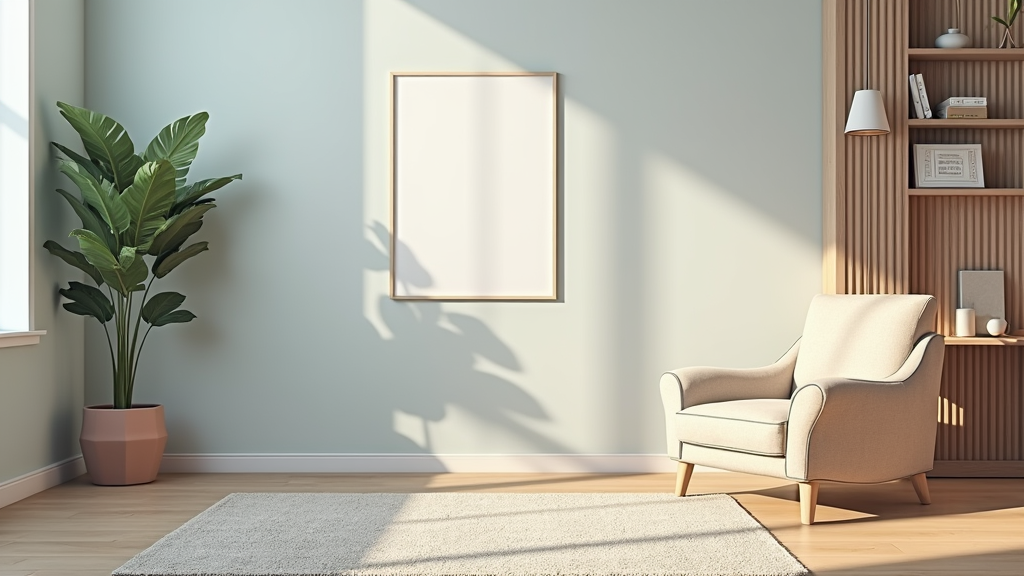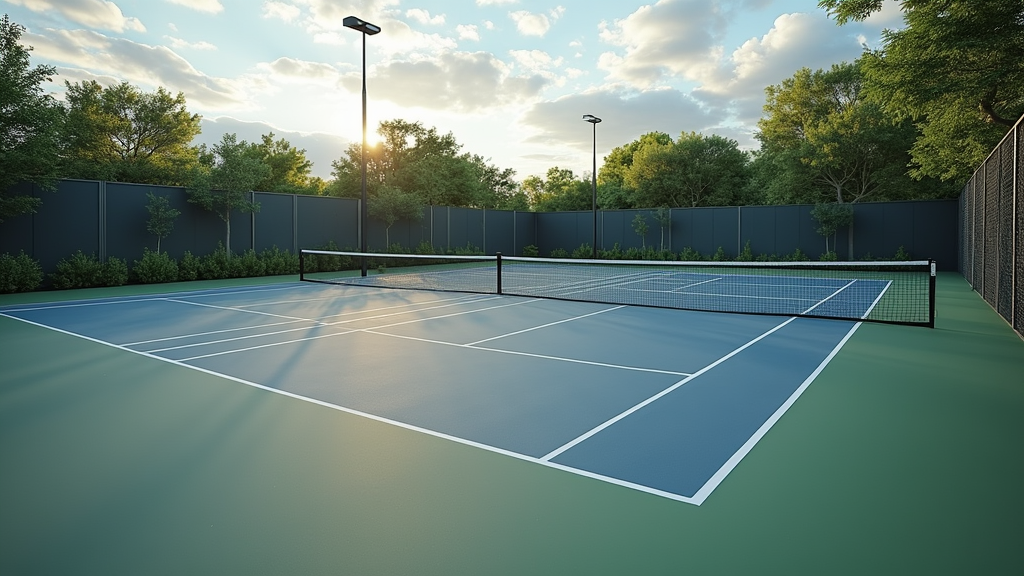Table of Contents
Introduction

Overview and Importance
Pickleball’s explosive growth in popularity has made it essential to understand the proper layout and dimensions of a pickleball court. More than just lines on a surface, an accurately laid-out court ensures fair play, player safety, and an optimal playing experience. With the sport’s booming popularity, getting the court right has never been more important.
The numbers speak for themselves: Pickleball participation has surged by an astonishing 158.6% over the past three years, according to the Sports & Fitness Industry Association. This surge translates to over 8.9 million players in the United States alone, highlighting the sport’s rapid expansion and mainstream appeal.
Why does accurate court layout matter so much? Correct dimensions are crucial for preventing disputes during gameplay and minimizing the risk of injuries. A court that adheres to standard specifications provides a consistent and predictable playing field, enhancing the overall experience for players of all skill levels.
Background
Pickleball’s story is one of remarkable evolution. Originating in 1965 as a backyard pastime, it has steadily grown into a competitive sport enjoyed by millions. The game’s humble beginnings on Bainbridge Island, Washington, have given way to a nationwide phenomenon, with dedicated courts popping up in communities across the country.
Recent developments in the world of pickleball include increased standardization of court dimensions, ensuring consistency across different playing venues. This standardization is driven by the growing number of tournaments and competitive leagues, where fair play and precise measurements are paramount. Furthermore, there is a growing demand for both public and private pickleball courts, reflecting the sport’s increasing popularity and accessibility.
What You’ll Learn
In this guide, you’ll gain a comprehensive understanding of the core concepts related to pickleball court layout. We’ll delve into the standard court dimensions, including the overall size, the non-volley zone (or “kitchen”), and the service areas. You’ll also learn about different surface material options and how they can impact the speed and bounce of the ball.
Beyond the theory, we’ll focus on practical applications. You’ll learn how to design and construct a pickleball court, taking into account factors such as space constraints, budget considerations, and environmental conditions. We’ll also explore how to optimize court layout for different environments, whether you’re building a court in your backyard, at a community center, or in a dedicated pickleball facility.
Understanding the Basics of Pickleball Court Dimensions
Fundamental Concepts
Before diving into the specifics of pickleball court dimensions, it’s crucial to understand some fundamental concepts. Knowing the key definitions and core principles will provide a solid foundation for further exploration.
- Key definitions:
- Baseline:The line at the back of the court, 22 feet from the net.
- Sideline:The line on the side of the court, marking the boundary of play.
- Non-volley zone (kitchen):The area extending 7 feet from the net on both sides, where volleying is prohibited.
- Service zone:The area behind the baseline where the serve must be initiated.
The core principles revolve around adherence to official dimensions, as set by governing bodies like the USA Pickleball Association (USAPA). These dimensions are carefully designed to ensure fair play and consistency across different venues. Additionally, player safety and comfort are paramount considerations in court design and maintenance. This includes factors like adequate space around the court and appropriate surface materials.
Essential Components
A pickleball court comprises several essential components, each playing a crucial role in the game. Let’s break down the required elements and key features to consider when setting up or evaluating a pickleball court.
- Required elements:
- Court surface
- Net
- Lines
The primary aspects of a pickleball court center on its dimensions. The standard pickleball court measures 44 feet (13.41 meters) in length and 20 feet (6.1 meters) in width. The net height is another critical factor, standing at 36 inches (0.914 m) at the sidelines and 34 inches (0.864 m) at the center. The non-volley zone, often called the “kitchen,” extends 7 feet (2.13 m) from the net on each side, influencing strategic play. Finally, the service zones extend 15 feet (4.57 m) from the net on each side, dictating where players must serve from.
Beyond the core dimensions, several secondary aspects contribute to the overall quality and functionality of a pickleball court. Fencing and ball containment are important, with heights typically ranging from 4 to 10 feet, to prevent balls from straying too far. Lighting is another key consideration, especially for evening play, with LED lights recommended and poles ideally positioned at each corner. The surface material also significantly impacts gameplay and player comfort. Common choices include asphalt, concrete, acrylic coatings, and modular tiles, each offering different levels of cushioning and durability.
While the standard dimensions are widely accepted, some important variations exist. A double pickleball court, designed for both pickleball and badminton, has total dimensions of 60 feet (18.29 meters) in length and 34 feet (10.36 meters) in width. Runoff space is another critical factor, providing players with room to safely move around the court. Ideally, there should be 10-12 feet of space beyond the baseline and 7-10 feet on either side of the court. For tournament play, the recommended playing area for both singles and doubles is 30 by 60 feet, though some tournaments may require extended dimensions up to 34 by 64 feet to accommodate larger venues and spectator space.
Detailed Guide

Preparation
Before you start building your pickleball court, careful preparation is crucial for a successful project. This involves gathering the right materials, preparing the site, and considering various important factors to ensure your court meets your needs and complies with regulations.
- Required materials:
- Measuring tape: Essential for accurate court dimensions.
- Line marker: To create clear and durable lines.
- Court surface material: Choose based on your budget and desired playing experience.
- Net: Standard pickleball net with appropriate height.
- Posts: Sturdy posts to support the net.
For line marking, you have a couple of options to choose from:
- Court Tape Options: $8 – $21 per 200-foot roll
- Line Marking Paint: $45.99 per can
Initial setup is just as important as having the right materials.
- Clear the area and level the ground: A smooth, even surface is essential for fair play and safety.
- Test tape on a small court area to check for residue or discoloration: This helps avoid damaging your court surface.
Before diving in, there are a few important considerations to keep in mind.
- Check local building codes and HOA restrictions: Ensure your project complies with all regulations.
- Consider safety space around the court perimeter: Provide ample room for players to move without obstruction.
Step-by-Step Process
With your materials gathered and site prepared, it’s time to start building your pickleball court. Follow these clear instructions and best practices to ensure a professional-quality result.
- Clear instructions:
- Measure and mark the court dimensions (44 ft x 20 ft): Accuracy is key for a regulation court.
- Install the net posts and net (36 inches at sidelines, 34 inches at center): Ensure the net is at the correct height for optimal gameplay.
- Mark the non-volley zone and service lines: Clearly define these zones for fair play.
Follow these best practices to guarantee great results:
- Use accurate measuring tools: Precise measurements are essential for a regulation court.
- Ensure lines are straight and clearly visible (2 inches wide): Clear lines are crucial for gameplay.
- Use a sealer if painting lines to prevent bleeding: This will keep your lines sharp and prevent discoloration.
Avoid these common mistakes that can affect the quality of your court:
- Incorrect measurements: Double-check all measurements before marking lines.
- Uneven surface: A level surface is essential for fair play and safety.
- Poorly marked lines: Clear, well-defined lines are crucial for gameplay.
Advanced Techniques
Take your pickleball court to the next level with these expert tips, optimization methods, and troubleshooting advice. These techniques will help you create a court that not only meets regulations but also provides an exceptional playing experience.
- Expert tips:
- Consider court orientation (north-south) to minimize glare: Optimize playing conditions for sunny days.
- Install a vapor barrier for drainage and court longevity: Protect your court from moisture damage.
- Use Zip Strips for seams between sections of the court pad: Create a smooth, seamless surface.
Implement these optimization methods for a superior court:
- Choose a surface material that suits your needs (Asphalt, Concrete, Acrylic Coatings, Modular Tiles): Select the best material based on your budget and playing preferences.
- Implement proper drainage to prevent water pooling: Avoid standing water and ensure quick drying after rain.
Here is some helpful troubleshooting advice:
- Addressing cracks in asphalt surfaces: Repair cracks promptly to prevent further damage.
- Repairing or replacing damaged net posts: Ensure your net posts are sturdy and in good condition for safety and optimal play.

